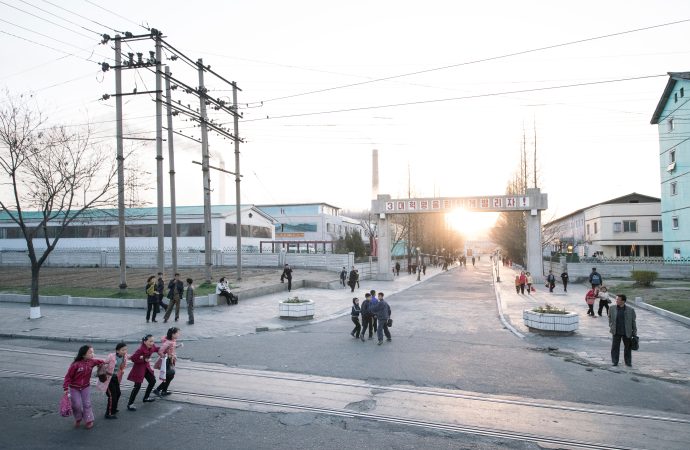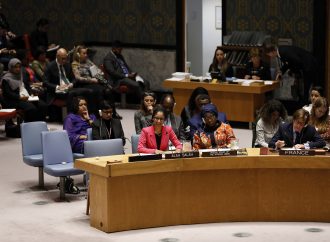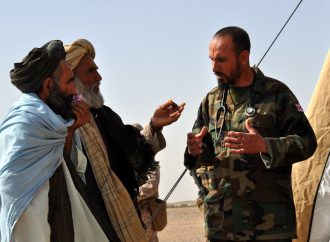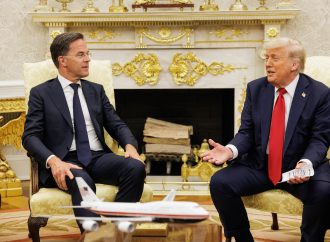North Korean and US relations have oscillated between hostility and limited detente for decades. This has only grown more intense in recent years. What are the underlying drivers in US-North Korean relations in the age of Donald Trump and Kim Jong-un?
For
almost seven decades since the Korean War, North Korea has maintained a tenuous
relationship with the international community, particularly with the portion of
the international community allied with the United States. It has alternated
between long periods of confrontation/tension/impasse and shorter periods of
negotiation/limited detente.
The
historical pattern of confrontation alternating with negotiations is being
repeated today with three key differences:
- the negotiation/detente portion of the equation is being played out at a much higher level than previously, in summits between leaders;
- both sides of the equation are happening in real-time before the world media; and
- the alternating periods of confrontation/tension/impasse and negotiation/detente are taking place in a compressed time frame with ongoing impasse punctuated by summits.
The key
variants in the situation are the mercurial US President Donald Trump and the
enigmatic, dynastic North Korean leader Kim Jong-un and the relationship with
each other, which they have established and both value. Currently, both sides
are pursuing dual policies but in an asymmetrical fashion that makes the
alignment of positions problematic and the prediction of outcomes fraught with
uncertainty.
Recommended: Korean Demilitarized Zone Essential to Thousands of Migratory Birds
Further, Donald Trump has
unwittingly led the North Koreans to believe that the only worthwhile
negotiations are with him. Therefore it is no wonder when negotiations at
officials level either stall as in Stockholm in October 2019 or do not occur at
all.
Arguably
of the two, it is the US which is displaying a more erratic and inconsistent
approach and the North Koreans who have a coherent policy, albeit towards a
goal objectionable to much of the international community.
There is
a clear disconnect between the approach of President Trump and, at least, part
of his National Security team, a disconnect that the North Koreans are
attempting to exploit and increase.
Currently, both sides are pursuing dual policies but in an asymmetrical fashion that makes the alignment of positions problematic and the prediction of outcomes fraught with uncertainty.
Historically,
US policy has been one of maintaining sanctions until and unless North Korea delivers
complete, verifiable, irreversible denuclearization (CVID). That has been
supported by a host of UN Security Council resolutions – led by the US –
barring North Korea from a range of activities including the multiple
short-range missile tests that North Korea has conducted in the last few
months. That remains the official US position.
However
Donald Trump has injected a major element of ambiguity and incoherence into US
policy with his Summits, his declarations of friendship for Kim Jong-un and unabashed
delight in receiving letters from Kim – call this pen pal diplomacy if you will
– his contradictory statements about North Korean intentions, his public
indifference to recent North Korean missile tests, his criticism of US/South
Korean military exercises and his provocative criticism of South Korea with his
unjustified and inaccurate attacks on this most loyal of US allies as a defence
freeloader.
The
result of this is a somewhat schizophrenic US policy. There are Summits with
North Korea full of friendly declarations of cooperation, trust and bonhomie
and what comes in between Summits when US officials have hewed more or less to
the traditional US position of no relief for sanctions without complete,
verifiable and irreversible denuclearization and “slow walks” of the “progress”
that the President has claimed to have seen at his meetings with Kim Jong-un.
As in other areas of US foreign policy, Donald Trump seems often strangely
disconnected from his negotiators.
US-North
Korean Policy coherence also suffers from a lack of inter-agency coordination.
Indeed recently departed National Security Advisor, John Bolton had reportedly
abandoned even the pretence of inter-agency consultation. Instead, US policy
seems to reflect who has the last word with Donald Trump on any given day and
how this matches his whims and inclinations at that moment. It remains to be
seen to what extent the new National Security Adviser will restore inter-agency
coordination and what difference this will make with Trump.
The departure of Bolton who
opposed the DMZ meeting of Trump and Kim and persuaded Trump to take a
hard-line approach at the Hanoi Summit makes it more likely that US policy will
tilt more towards an agreement than has hitherto been the case. And that may
have been reflected in the reported approach of US negotiators in the recent
talks in Stockholm.
Having
said that, even without John Bolton, any agreement by Donald Trump will be done
in the face of the near consensus of North Korean experts including foreign and
American experts and those in the Pentagon, State Department, National Security
Council and US intelligence agencies that North Korea will never give up a
nuclear weapons capability which after all has brought it face time with the
most powerful person in the world. This assessment clashes directly with the
cherished view of Donald Trump.
On the
North Korean side, there is also a dual approach, but it does not reflect a
division in policy for in North Korea, there can be no dissent from the
leader’s approach. Instead, what we see are North Korean tactical moves which
are part of a broader strategy.
Recommended: What does a new ambassador mean for Canada-China relations?
However, while the North Korean
side is coherent, the pursuit of that policy has its own constraints and
limits.
There
are four fundamental truths that must be kept in mind when examining North
Korean policy and actions. First, the number one priority for North Korea was
and is the security of the regime and the state – which in the view of the
regime are one and the same.
Second,
it believes that regime security can only be guaranteed by a nuclear and
missile capability which alone can deter a US hell-bent on regime change. I am
not saying that the North Korean assessment of US intentions is correct – but
it is their assessment and their fear.
Third,
the North Korean regime is not suicidal. It is not about to launch a nuclear
attack on the US or for that matter, Japan or South Korea which would end in
its own destruction. In my experience with the US military, they always dealt
with North Korea as a rational actor. However, accidents and miscalculation do
happen, and that is always a danger.
North Korea has sought to develop a combination of tactics which will simultaneously allow it to maintain its nuclear capability and lift the burden of sanctions.
Fourth,
North Korea’s national security also requires economic strength and, however,
ingenious North Korea has been in evading sanctions, sanctions evasion is, at
best, a holding action. For real economic performance, North Korea requires
relief of sanctions.
With those strategic objectives in mind, North Korea has sought to develop a combination of tactics which will simultaneously allow it to maintain its nuclear capability and lift the burden of sanctions. That needle is difficult to thread in the face of the long-time US position, which demands total denuclearization before the relief of sanctions. But the eye of the needle is considerably larger if President Trump can be persuaded to accept less than the maximalist US position. And, arguably, with the departure of John Bolton, the eye of the needle has gotten larger.
So the
success of the North Korean approach depends on the relationship between Kim
and Trump and the willingness of the US President to deviate from conventional
US policy.
All
North Korean measures should be viewed in light of their strategic objectives
and their tactical approach to Donald Trump.
Some of the North Korean tactics
are familiar – a leaf from the previous handbook (i.e. offer to destroy
obsolete facilities etc.) while others are new (i.e. personal letters from the
North Korean leader to the US President) but all are aligned with the basic
strategy.









